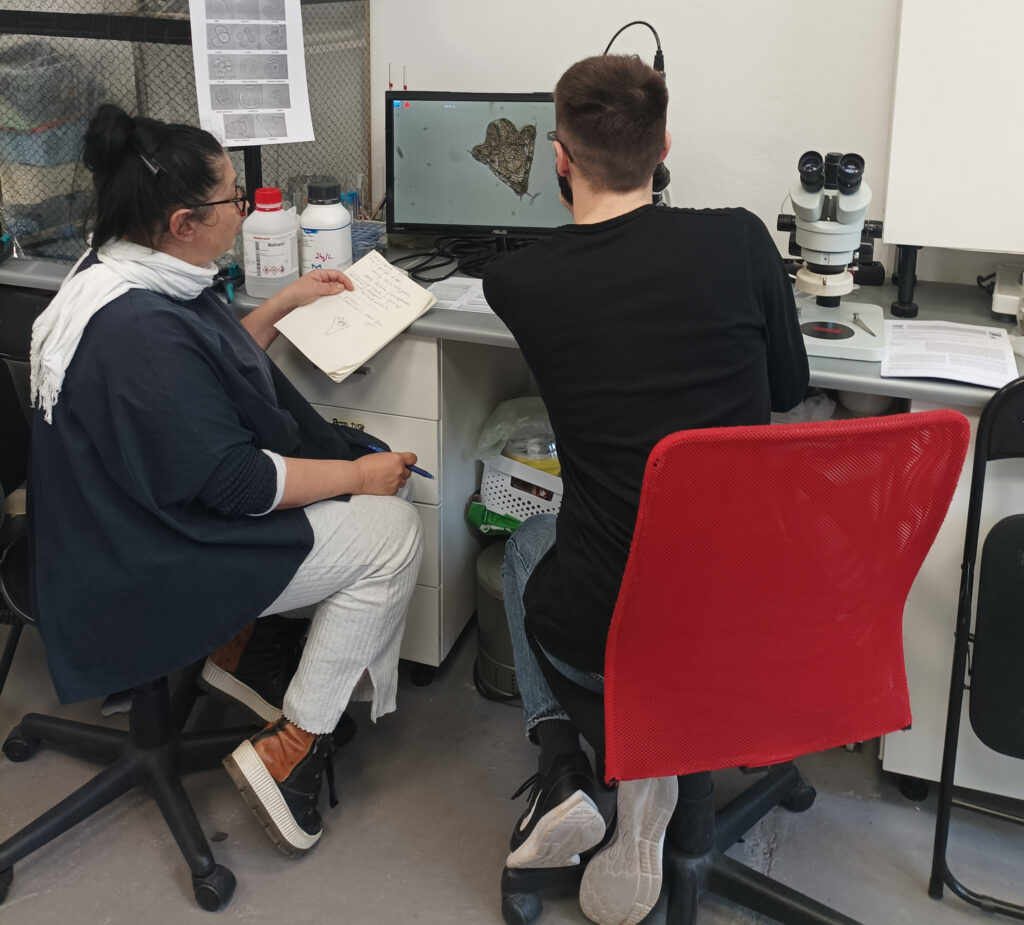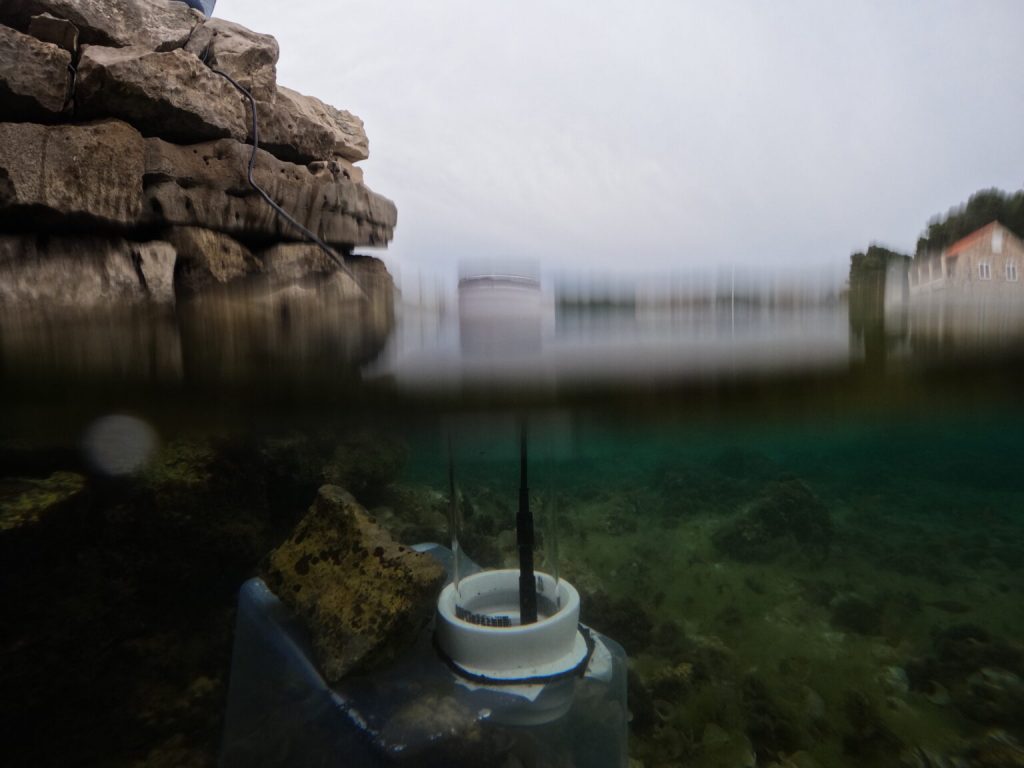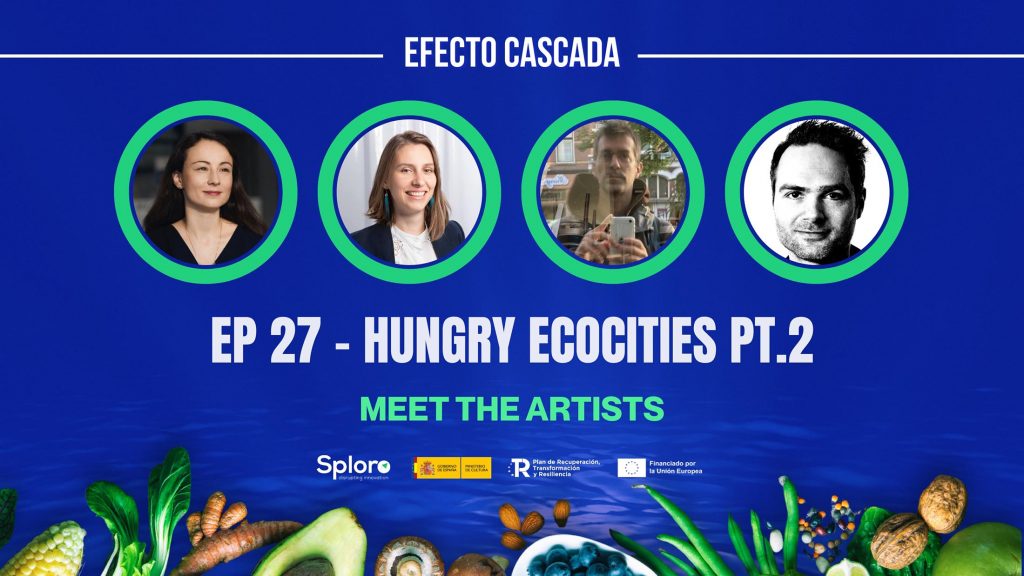The Influence of Pollutants on the Adriatic Sea – in conversation with Robertina Šebjanič and Marjan Žitnik
The last time they were interviewed, S+T+ARTS artists-in-residence Robertina Šebjanič and Marjan Žitnik (UR Institute, Dubvronik) were in the middle of their research phase of the project “Zero Pollution Adriatic”, developing a smart underwater reef with sensors to measure the temperature, pH, and oxygen levels of the Adriatic sea. A couple of hours after they return from their field trip to the Adriatic island Mljet, I talk with them about their current developments.
In situ experimentation
The previous idea was to develop a smart underwater reef, but after the research phase, Robertina decided to use the technique and methods of the benthic chamber. The term “benthic” is derived from the Greek word “benthos”, meaning the depth or floor of a body of water, for example the sea or a lake. To fully understand the Adriatic sea’s ecosystem, the technique of the benthic chamber measures the substances – for example, the temperature and oxygen levels – between the sediment and water.
Robertina: ‘In terms of technological innovation, we developed two prototypes: the benthic chamber (which I developed with advice from dr. Alenka Malej) and the S.M.A.R.T. urchin (developed by Marjan with support of the UR Institute). We used the parameters of pH stabilities, salinity, dissolved oxygen, and temperature. I mostly worked on the benthic chamber to see the dissolved oxygen flow in the coastal areas. That is one of the main indicators that gives information on how much pollution influences biodiversity in coastal areas. With Marjan, we both worked with the same parameters and had been comparing them to see what technological principle and method would be the best fit.’
When asked about the challenges that occurred during the research, Marjan answers: ‘The biggest challenges are the tough conditions under water. It’s not easy to develop the “low-cost” equipment that should work under the sea for a long time. But sometimes, the simplest solutions are the best, so we combined well-known and regularly used electronic connectors with IP68 sensors. After testing and tweaking, it worked quite well, and we finally got the stable results without sinking the testing buoy!’
The influence of pollution on sea urchins
During their residency, Robertina and Marjan also investigated the influence of pollution on sea urchins, whose bodies almost work as a water filtering system. Robertina shows me the data of the lab experiments on the sea urchins. ‘We tried to research how the pollutants are reflected on the microscopic level of sea urchins in the coastal area.’ Together with intern Filip Grgurević at the UR Institute, Robertina did preliminary research on the early stage anomalies in the development of the sea urchins and the potential bioindicators of pollutants in the marine environment. Robertina: ‘The experiment took five days, in which they developed from the egg to a larva. We have exposed them to dishwashing soap, and it absorbed the color from the soap into its body. When exposing them to motor oil and lead, we saw obvious changes in the development of the sea urchin. The experiment proved that there is a huge influence from the pollution on the urchins.’
Marjan: ‘The development was quite challenging, but we made it in the end. We successfully implemented all the sensors into the beta program “S.M.A.R.T urchin” and programmed the software for the data collection, calibration, and storage. We did on-site testing (in the sea) and we got successful results. The most interesting detection was an increase of the dissolved oxygen inside the benthic chamber, proving that the S.M.A.R.T. urchin’s calibration was successfully done. Now we aim to detect the speeds of the dissolving oxygen process in different sea conditions, which will be our main parameter for the measurements and comparisons in the future.’
An empathic method
Their project so far has resulted in different outcomes. First, they want to continue developing the S.M.A.R.T. urchin prototype towards a more stable, innovative technology. The second part is social innovation: finding a way to engage the tourist industry, for example, in shifting to environmental packaging. The workshops they held will result in a web page (Zero Pollution Adriatic) – which Marjan is currently developing – to provide the local community and tourist industry with information.

From all the data they gathered during their research, Robertina is developing anartwork (in collaboration with videographer Tanja Minarik) that will represent the “aquatic sensing” of the coastal environment. ‘The storytelling of the artwork will represent the current situation of changes in the marine environment that are mostly caused by human presence (residue waste, oil, low oxygen, hypoxia). I want to go beyond showing the current situation and show the future potential of coexistence in the coastal areas.’ Mirroring the current situation, the viewer will not be an observer but an active participant in the installation. ‘I’m working on the levels of empathic methods of connection to not only be observers of the situation but actively engage with the ecological situation that we are all part of…’
Text: Nadeche Remst


